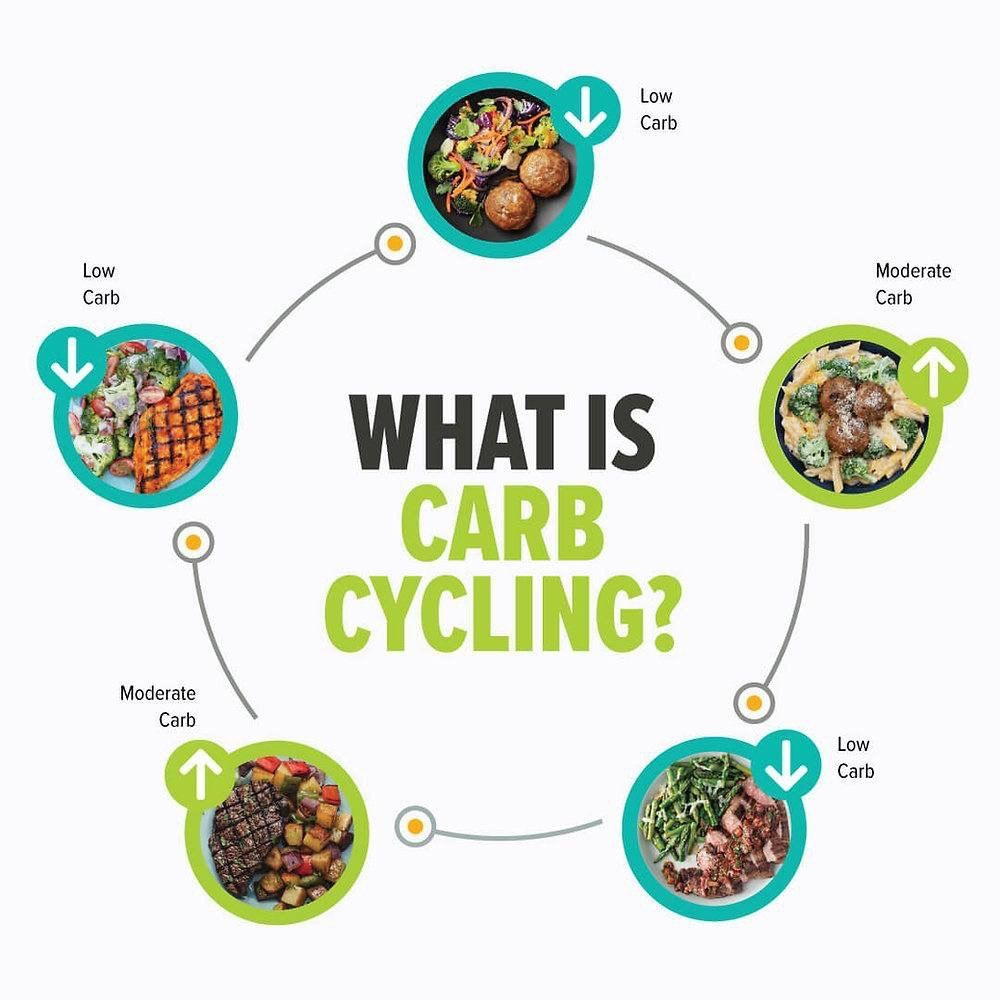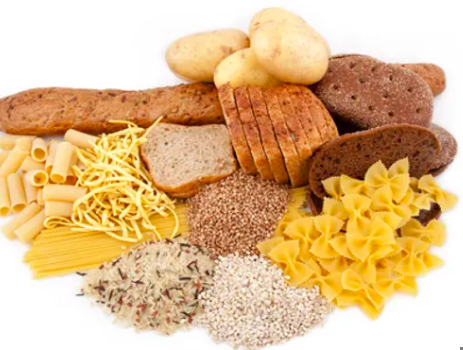What is carb cycling ?
Carb cycling is a dietary approach that involves alternating carbohydrate intake on a daily, weekly, or monthly basis. It is commonly used by athletes, bodybuilders, and fitness enthusiasts to optimize performance, improve body composition, and enhance overall health.
In carb cycling, you strategically manipulate your carbohydrate intake by alternating between high-carb days and low-carb days. On high-carb days, you consume a higher amount of carbohydrates to replenish glycogen stores and provide energy for intense physical activity. On low-carb days, carbohydrate intake is reduced to promote fat burning and encourage the body to utilize stored fat as a fuel source.
How is Carb cycling works ?
The frequency and duration of carb cycling can vary depending on your goals and your body type. Some may choose to cycle carbohydrates on a daily basis, while others may opt for weekly or monthly cycles. The specific macronutrient ratios and calorie intake during each phase of carb cycling can also be adjusted based on individual needs and desired outcomes. Get you free quiz to find out what is the best option for you? Internal link to test
What is carb cycling benefit ?
One of the primary benefits of carb cycling is its ability to optimize athletic performance. By strategically manipulating carbohydrate intake, they can ensure that their glycogen stores are replenished adequately for intense physical activity. On high-carb days, athletes can fuel their workouts and enhance endurance, which can lead to improved performance and training adaptations.
Another advantage of carb cycling is its potential to support weight loss and body composition goals. By alternating between high-carb and low-carb days, you can create a calorie deficit while still providing your body with the necessary nutrients for optimal functioning. This approach can help preserve muscle mass while promoting fat loss, making it an attractive option for those seeking to improve their body composition.
Furthermore, carb cycling can have a positive impact on insulin sensitivity. By cycling carbohydrate intake, individuals can improve their body's response to insulin, a hormone responsible for regulating blood sugar levels. This can be particularly beneficial for individuals with insulin resistance or those at risk of developing type 2 diabetes.
Additionally, carb cycling can provide individuals with a flexible and sustainable approach to nutrition. Unlike strict low-carb diets, carb cycling allows for occasional higher carbohydrate intake, which can help individuals adjust to their dietary plan in the long term. This flexibility can reduce feelings of deprivation and increase dietary compliance, ultimately leading to better overall success in achieving health and fitness goals.
Lastly, carb cycling can also have psychological benefits. By incorporating higher-carb days, individuals can enjoy their favorite carbohydrate-rich foods without feeling guilty or deprived. This can contribute to a more positive relationship with food and a sustainable approach to healthy eating.
To sums it up, carb cycling offers several potential benefits, including improved athletic performance, support for weight loss and body composition goals, enhanced insulin sensitivity, flexibility in dietary choices, and positive psychological effects. However, it is important to note that individual responses to carb cycling may vary, and it all depends on your body type. We recommend to take you free quiz and let us help you to choose what is the best for your body type. Internal link to test
What are the best carbs in carb cycling ?
When it comes to carb cycling, selecting the most suitable carbohydrates is crucial for optimizing performance and achieving desired fitness goals. To ensure an effective carb cycling regimen, it is essential to choose carbohydrates that are nutrient-dense, low in refined sugars, and provide sustained energy.
Here are some of the best carbohydrates for carb cycling:
1. Whole Grains: Incorporating whole grains such as quinoa, brown rice, oats, and whole wheat bread into your carb cycling plan is highly recommended. These complex carbohydrates are rich in fiber, vitamins, and minerals, providing a steady release of energy throughout the day and aiding in digestion.
2. Sweet Potatoes: This starchy vegetable is an excellent choice for carb cycling due to its high fiber content and low glycemic index. Sweet potatoes offer a slow and steady release of carbohydrates, preventing blood sugar spikes and crashes. They are also packed with vitamins A and C, making them a nutritious choice for athletes and fitness enthusiasts.
3. Legumes: Including legumes like lentils, chickpeas, and black beans in your carb cycling diet can provide a good source of complex carbohydrates, fiber, and plant-based protein. Legumes offer a sustained release of energy, keeping you feeling fuller for longer and supporting muscle recovery.
4. Berries: Opting for fruits that are lower in sugar, such as berries is recommended during carb cycling. These fruits provide essential vitamins, minerals, and antioxidants while offering a low amount of carbohydrates and sugar to fuel your workouts and daily activities.
5. Vegetables: Non-starchy vegetables like broccoli, spinach, kale, and bell peppers are excellent choices for carb cycling. These vegetables are low in calories and carbohydrates while being rich in fiber, vitamins, and minerals.
Carb cycling tips
If you are considering incorporating carb cycling into your nutrition plan, here are some tips to help you get started:
1. Set clear goals: whether it's to lose weight, build muscle, or improve athletic performance. This will help you tailor your carb intake accordingly.
2. Plan your high-carb days strategically: Schedule high-carb days on your most intense workout days or days when you need higher energy levels. This will ensure that you have enough glycogen stores to fuel your workouts effectively.
3. Choose quality carbohydrates: Focus on consuming complex carbohydrates such as whole grains, vegetables, and legumes. These provide sustained energy and essential nutrients compared to sugary and refined carbohydrates.
4. Monitor your macro intake: Keep track of your protein, fat, and carbohydrate intake to ensure you are meeting your overall nutritional needs.
5. Gradually adjust your carb intake: If you are new to carb cycling, start by gradually increasing or decreasing your carbohydrate intake.
6. Listen to your body: Pay attention to how your body responds to different carb cycling patterns. Everyone's body is unique, so finding the right balance may require some experimentation. We can help you to find what is the best for your body.
7. Stay hydrated: Proper hydration is essential for optimal performance and overall health. Drink enough water throughout the day, especially on high-carb days when carbohydrates can increase water retention.
8. Plan your meals in advance: Prepare your meals and snacks ahead of time to ensure you have the right foods available when you need them. This will help you stay on track with your carb cycling plan and avoid impulsive food choices.
9. Seek professional guidance: If you are unsure about how to implement carb cycling or have specific dietary requirements, consult with our registered nutritionist. They can provide personalized advice and help you create a carb cycling plan that suits your needs.
10. Be consistent: Consistency is key when it comes to carb cycling. Stick to your plan and give it time to see results.
By following these tips, you can effectively incorporate carb cycling into your nutrition plan and optimize your energy levels, body composition, and athletic performance.



